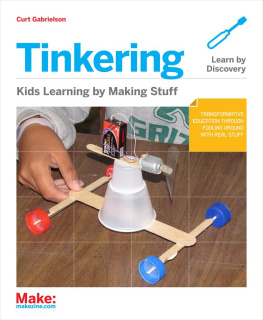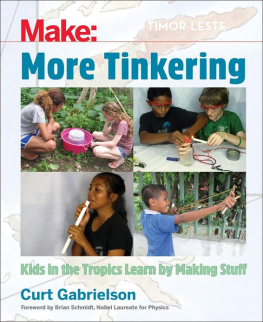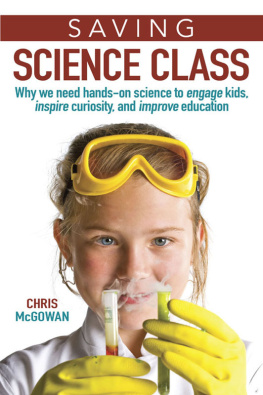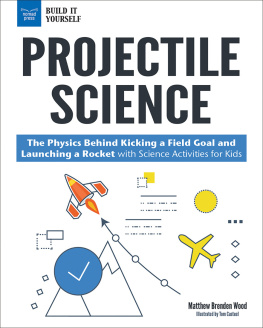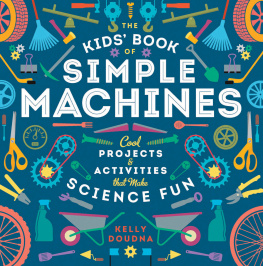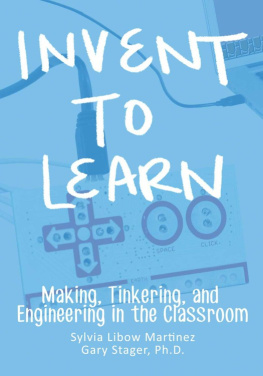Tinkering
Curt Gabrielson
Dedication
To Paulo and Zoraya. Long may you tinker!
Foreword
Dale Dougherty, 2013
Tom Wolfe wrote a feature article in the December 1983 issue of Esquire magazine called The Tinkerings of Robert Noyce. Wolfe tells the very American story of a young man who grew up in Grinnell, Iowa, where he went to college before going on to MIT for graduate school. After school, Noyce headed to California in 1956 where he would invent the electronic future as a co-founder of Intel and shape what we now call the Silicon Valley.
Wolfe points out that Noyce had a typical Midwestern upbringing. He was a curious boy and a good athlete. When he was 13, he and his brothers read an article in Popular Science about a box kite that could lift a person off the ground. Noyce and his brothers set out to build and test that kite, asking themselves: would it work as they say? The boys would persist after several failures to get the kite up in the air. While Noyce was a good student, he almost got thrown out of college because of a prank. Fortunately, a teacher recognized Noyces talent and stepped in to help. That teacher introduced Noyce to transistors, while few others had even heard of them, and Noyce was curious enough to wonder how they might be used.
Wolfe wonders why a generation of great engineers and scientists came from such unexpected places. Just why was it that small-town boys from the Middle West dominated the engineering frontiers? Noyce concluded it was because in a small town you became a technician, a tinker, an engineer, and an inventor, by necessity. In a small town, Noyce liked to say, when something breaks down, you dont wait around for a new part, because its not coming. You make it yourself.
Noyce was fortunate to have two kinds of education: informal as well as formal. Growing up, he learned a lot outside of school, as did others who grew up on farms and in families that knew how to use tools and how to fix machines. Formal learning often doesnt make sense without informal learning. It offers too much theory without enough grounding in practice. Tinkering represents this kind of practical education that is often undervalued in formal settings.
Tinkering is not a field like chemistry or physics, yet it is worthy of study, particularly by those who want to engage kids as makers today. Tinkering is to making as running is to sports, as tapping your foot is to music. Tinkering is a process. It is an attitude. It is the means to fix, make, change, modify, and customize the world.
Curt Gabrielson and his colleagues at the Watsonville Environmental Science Workshop are pioneers in informal education. They are skilled practitioners, thoughtfully organizing learning experiences for children in a supportive context outside of school. In this book, Gabrielson shows how to create these meaningful experiences for students and how adults can be effective as facilitators of learning. Tinkering can help children build confidence in their own capabilities and explore the world they live in. All children deserve to have these opportunities, early and often, whether at home or even in school. Whats more, I believe that todays children are demanding such learning experiences because they know how essential it is for them to grow as learners and become creative contributors to society. Like Noyce, many of them might already realize that you cant just buy what exists but instead you have to make it yourself.
Think what it means to introduce more children to tinkeringmore girls, more kids from different economic and ethnic backgrounds, more kids with different learning abilities, middle class kids who are bored in school and more middle-aged adults? If we can get more of us tinkering, who knows what tough problems we can solve, what discoveries we will find and what new things we will create?
Preface
You must have seen infants and toddlers tinkering with things: theyllfocus intently on some little object, say a little wooden box, grasp itclumsily, claw at it, look at it from all sides, shake it, pound on ittrying to break it open. At some point, all of a suddenpopit comesopen! Now the undexterous hands gather the little animal figures lyingnearby. One by one the hands jam figures into the box. More and more arestuffed in until theyre sticking out the top. The lid is tried andfound not to fit. It is mashed a few times, and then alternatives areattempted. More force is applied with large, local objects. A fewfigures are removed. The lid is tried again. An iterative process isbegun until the lid finally snaps shut on the animals.
The kid just learned a bit about volume, three-dimensional space,opening and shutting, space and matter, properties of materials,arrangement of objects (packing), and the value of repeated attempts.This was done with no institution, no teacher, no curriculum, noexplicit or predefined goals, no grades, no tests nor evaluation of anykind, no threat of punishment nor penalty, no reward, no praise, no scaffolding , no final discussion nor debriefing nor facilitatedclosure , but with immense and easily visible satisfaction. Young kidsalso learn like this in groups, with the significant advantage that theycan learn from one anothers input as well.
Ive never once heard anyone ask of this situation, Well, yes, she ishaving fun, but is she learning anything? Everyone believes she is, anda multibillion-dollar industry is built on selling parentssophisticated versions of that box and those animals precisely becauseparents want their kid to learn in this way. On the contrary, and quiteperplexingly, when older students are exploring and tinkering in justthe same manner, especially if it happens to be in an institutionmandated to carry out education, one can hardly describe the scenewithout a chorus of glowering skeptics chiming in, as if on cue: Well,yes, theyre having fun, but are they learning anything?
Heres my answer, the answer of this book: heck yes theyre learningsomething, and it may be the most valuable thing theyve learned allweek, and it may raise all sorts of questions in their minds thatinspire them to learn more about what theyre tinkering with, and itmay start them on a path to a satisfying career, not to mention good funon their own time, and it may put them in the drivers seat of theirown education by realizing their competence and ability to learn throughtinkering, and they may begin to demand more of just this sort oflearning opportunity.
If you question how I know this learning took place in the course ofthat tinkering, Ill have to confide that I have no proof beyond thefollowing: most kids have learned oodles and oodles of stuff, includingtalking and walking, texting, and skateboarding, with just this hit-and-miss, trial-and-success, seat-of-the-pants approach. I believe this iscalled proof by inspection.
Now, you can get a PhD trying to show, incontrovertibly, that learningis happening in a tinkering environment, or attempting to work outexactly how it is happening. Ill certainly not stand in your way.Thats far and away more important than developing the next generationof fill-in-the-bubble exams. But Im not so interested in that. Imcomfortable with my gut instinct, and Im enormously interested in andcommitted to trying to get more kids tinkering.
One of the great challenges scientists face when doing science is tohold their own experience as a single data point, worth no more and noless than the thousands of others theyll need to draw a legitimateconclusion. But as you tread the path toward drawing a conclusion onthis topic, allow me to present to you my data point to add to yours andall those others.

